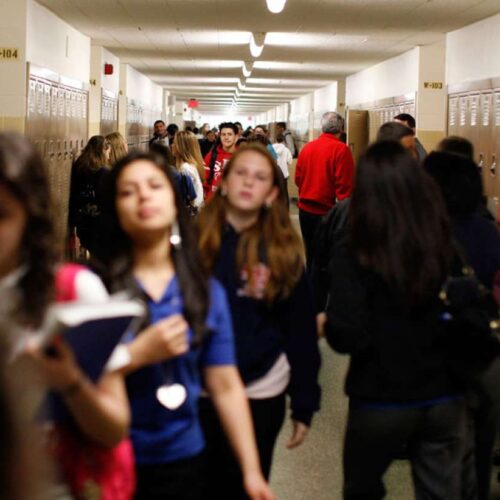Introduction
Nearly 60 percent of all Texas public school students were suspended or expelled at least once between their 7th and 12th grade years, according to a landmark study released Tuesday by the Council of State Governments.
The analysis, which tracked all Texas students entering 7th grade between 2000 and 2002, also found that only 3 percent of these disciplinary actions were based on state laws requiring suspensions or expulsions for specific acts, such as carrying a weapon to school.
The vast majority of suspensions and expulsions – 97 percent, the study authors say — were based on local policies or the discretionary decisions of local school officials. And African-American students were 31 percent more likely to be suspended or expelled based on those discretionary decisions than were white or Hispanic students.
Practices for meting out discipline, however, seemed to vary greatly from school to school, even among those with student bodies of identical ethnic mixes. The study is sure to fuel a burgeoning debate over school disciplinary policies and their long-term effects on kids at risk.
“An important take-away from this study is that individual schools within a state, working with the same resources and within the same statutory framework, have the power to affect their school disciplinary rates,” the report’s authors say.
The Council of State Governments is a 75-year-old nonpartisan organization that provides research on policies affecting the states.
Council researchers also found that once Lone Star state students were suspended multiple times or expelled, they were more likely to have brushes with the Texas juvenile justice system and not finish school.
About 15 percent of the suspended and expelled students had received these sorts of punishments 11 times or more. Only about 40 percent of that particular group of students finished high school during the time researchers tracked them.
Nearly half of that same group were referred to the state juvenile justice system during their school years, but they were reported to authorities mostly because of infractions committed outside school.
Mike Thompson, director of the Bethesda, Md.-based Justice Center of the Council of State Governments, said the study, which took more than two years to complete, is “groundbreaking and first-of-a-kind for several reasons.”
The study is unusual, Thompson said, because it is not based on a survey of students, but on actual records of all Texas students who began 7th grade in 2000, 2001 and 2002.
Researchers from the council and Texas A&M University tracked these individual records through at least a six-year period. The school records were also matched to juvenile records sorted by the Texas Education Agency, which took out names and other identifiers that couldn’t be disclosed to outside researchers.
The type of discipline counted in the report could be as modest as a one-time suspension for misbehavior that took place in school and for only one period. Among other types of discipline counted were out-of school suspensions of students lasting for days, or expulsions that removed them from neighborhood schools and placed them in alternative schools or juvenile justice centers.
Texas requires that expelled students have access to an education, in an alternative setting.
Thompson said the Texas experience provides valuable lessons for other states grappling with how to discipline students while trying to reduce the dropout rate and prevent youths getting into trouble with the law.
Texas has the second largest school system in the United States, Thompson said, and the diversity of its student body “is becoming typical of school diversity everywhere.” The Texas student population is 49 percent Hispanic, 33 percent white and 14 percent African-American.
Other large states report similar suspension and expulsion rates as Texas. But some states appear to have even tougher track records.
In 2010, according to the council’s report, California schools ordered out-of-school suspensions or expulsions from neighborhood schools for nearly 13 percent of its K-12 public school students. The percentage for Florida’s students was nearly 9 percent and in Texas almost 6 percent.
Read the new report, “Breaking Schools’ Rules,” here:
Read more in Education
Juvenile Justice
New report cites disproportionate punishment for black students
North Carolina research dovetails with recent findings in Texas, other states
Juvenile Justice
Overmedicating young Louisiana inmates
Incarcerated youths are receiving antipsychotic drugs even when their conditions don’t call for it




Join the conversation
Show Comments